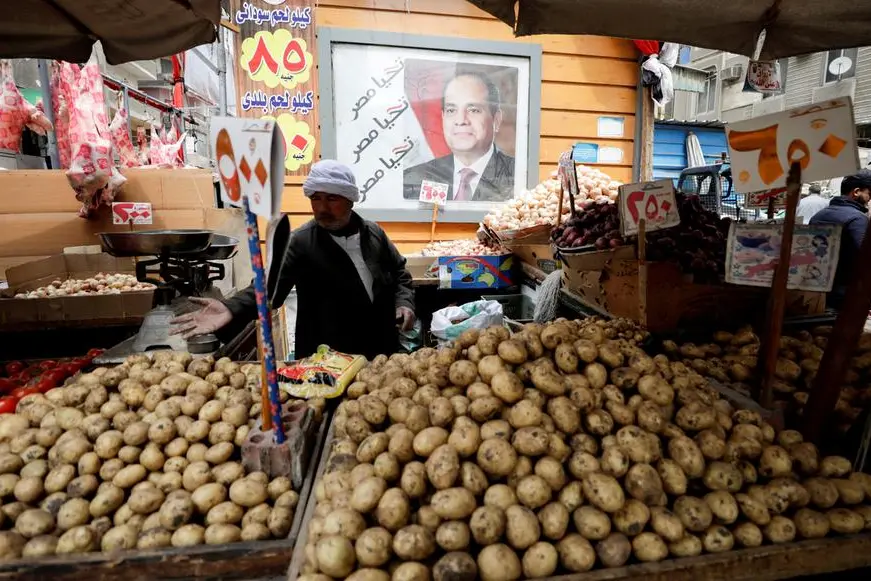PHOTO
Annual headline urban inflation increased to 13.1% in April from March’s 10.5%, marking the highest rate since May 2019.
The increase in urban inflation is attributed to strong monthly dynamics in both food and non-food items, reflecting the continued seasonal impact of Ramadan and the holidays. The price of tomatoes also spiked after the depreciation of the EGP that occurred on 21 March.
This comes as monthly urban headline inflation recorded 3.3% in April 2022 compared to April 2021’s 0.9%.
This increase was mainly driven by volatile food items, which recorded an all-time high monthly inflation rate. As reported, this increase is attributed to adverse weather conditions as well as higher fertiliser prices.
Monthly inflation also reflected higher prices of core food items — mainly fish and seafood, poultry, red meat, dairy products, among others.
Additionally, monthly headline inflation was impacted by exchange rate depreciation as well as seasonal patterns.
Furthermore, higher services inflation was mainly driven by higher expenditures on restaurants and cafes, handicrafts, and outpatient services, as well as higher rental values.
Retail items’ prices also increased in line with the seasonal pattern of higher clothing prices, while the increase in regulated items’ prices was due to higher fuel prices as announced by the automatic price indexation committee on 15 April 2022.
On an annual basis, the increase in headline inflation in April was driven by the higher annual contribution of food items, as annual food inflation increased for the fifth consecutive month to record 26%, up from March’s 19.8%, which is the highest rate recorded since November 2017.
This was further supported by a higher annual contribution of non-food inflation, as non-food inflation increased for the sixth consecutive month to record 7.5% in April from 6.5 % in March, which is the highest rate since June 2020.
Driven by broad-based higher annual contributions, annual core inflation also increased for the eighth consecutive month to record 11.9%, up from 10.1% — the highest rate since April 2018. This comes as monthly core inflation recorded 2.4% compared to 0.7% in April 2021.
Nationwide annual inflation and annual rural inflation increased as well to record 14.9% and 16.8%, up from March’s 12.1% and 13.7%, respectively.
Additionally, the prices of fresh vegetables and fresh fruits increased by 35% and 13.6%, respectively. Together, they contributed 1.46 percentage points to monthly headline inflation. This mainly reflected higher tomato prices, which increased sharply to contribute by 1 percentage point to monthly headline inflation.
The prices of poultry also increased for the fourth consecutive month by 8.4% to contribute 0.37 percentage points.
Moreover, the prices of fish and seafood increased for the fourth consecutive month by 13.1% to contribute 0.26 percentage points. This is the highest rate on record due to the occurrence of multiple holidays in the same month.
The prices of red meat increased by 2% as well to contribute 0.09 of a percentage point.
Furthermore, the prices of dairy products increased by 1.8% to contribute 0.06 of a percentage point.
Additionally, the prices of market rice increased for the tenth consecutive month by 3.4% to contribute 0.04 of a percentage point.
Also, the price of pasta increased for the seventh consecutive month by 4.8% to contribute 0.04 of a percentage point.
The prices of other core food items — including sugar, fats, other edible oils, market tea, pulses, among others — increased to contribute 0.13 of a percentage point as well.
Meanwhile, the prices of services increased by 1.2% to contribute by 0.42 of a percentage point. This was mainly due to the increase in rental values, prices of handicrafts, and outpatient services, as well as the expenditure of restaurants and cafes.
The prices of retail items also increased by 2.3% to contribute by 0.31 of a percentage point. This was mainly due to the seasonal increase in the prices of clothing and footwear, personal care products, household cleaning products, purchase of vehicles and spare parts, as well as furniture.
Furthermore, the prices of regulated items increased by 0.4% to contribute by 0.10 of a percentage point. This was mainly due to higher fuel prices — as the Automatic Fuel Indexation Committee raised them on 15 April — along with higher inland transportation costs and pricier butane gas cylinders.
Finally, monthly core inflation was affected by price changes of the aforementioned core CPI items.
Core food items contributed by 1.38 percentage points to the monthly core inflation, services 0.59 of a percentage point, and retail items 0.44 of a percentage point.
© 2022 Daily News Egypt. Provided by SyndiGate Media Inc. (Syndigate.info).





















